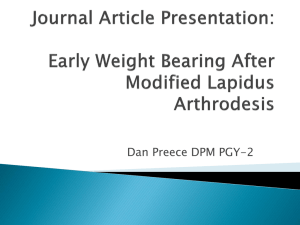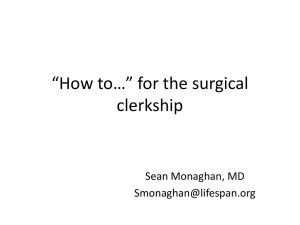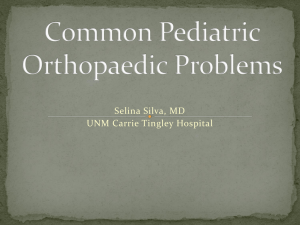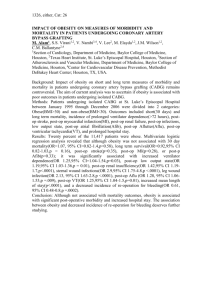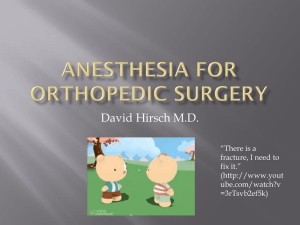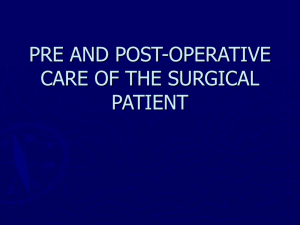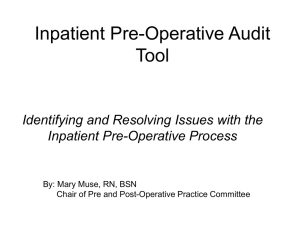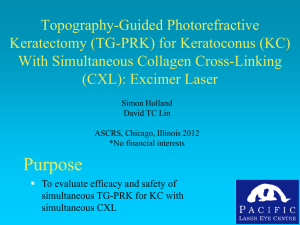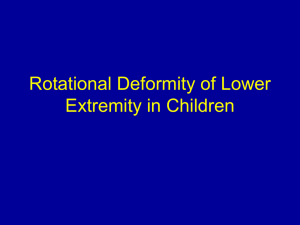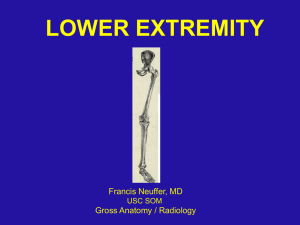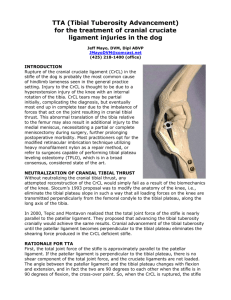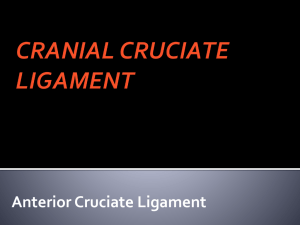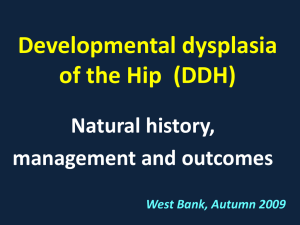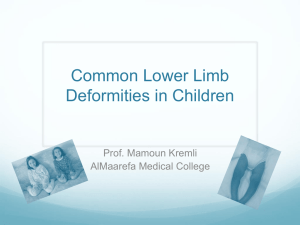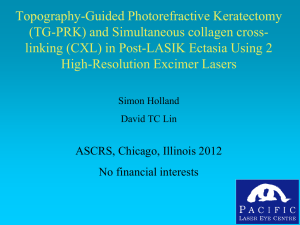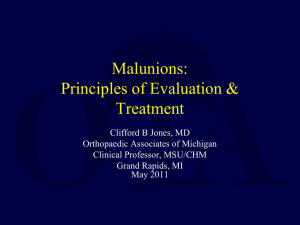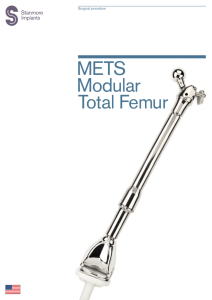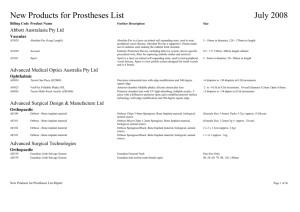Osteotomies About the Knee
advertisement
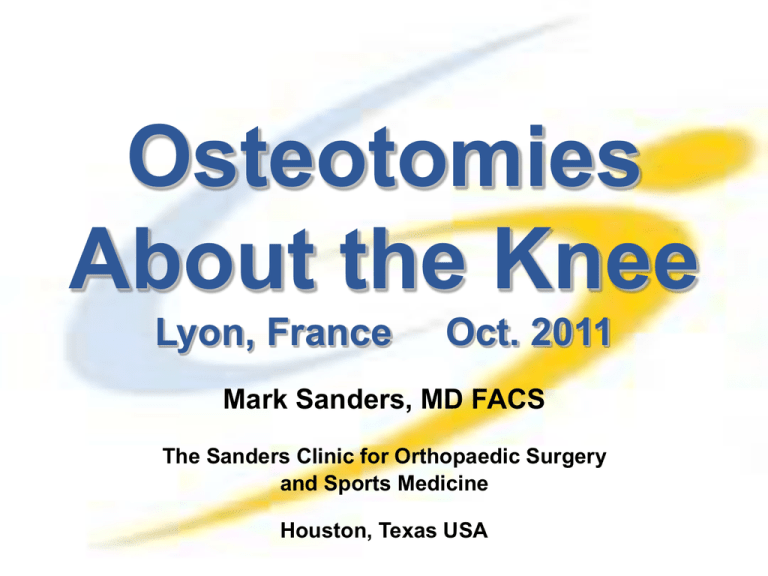
Osteotomies About the Knee Lyon, France Oct. 2011 Mark Sanders, MD FACS The Sanders Clinic for Orthopaedic Surgery and Sports Medicine Houston, Texas USA Disclosures • None to report “Orthopaedics” • Derived from Greek – orthos ("correct," "straight") – paideion ("child") -Nicholas Andry, Orthopaedia: or the Art of Correcting and Preventing Deformities in Children, 1741. Patient #1 • 28 y/o F nurse, previously athletic, c/o bilat multidirectional patella femoral instability, L>R • Multiple previous surgeries left knee – Lateral retinacular release x2 – Medialization osteotomy of tibial tubercle – Hardware removals, fasciotomy, “cleanouts” • Physical Examination – Increased femoral anteversion – Increased tibial external torsion Pre-op Pre-op Pre-op Pre-op Computerized Tomography Results • Femoral Anteversion: 50° R, 35° L (Normal 9-22° - D. Paley) • Tibial External torsion: 34° R, 39° L (Normal 18-28° - D. Paley) • TT-TG: 10mm R, 7mm L (Ideal tracking: 10-15mm - H. DeJour) Synchronous Surgical Treatment • Spinal/epidural anesthesia • Two lateral skin incisions • 20° proximal femoral external rotation osteotomy • 15° proximal tibial internal rotation osteotomy • 6mm laterally directed tibial tubercle osteotomy • Distal ITB based LPFLR • Immediate unrestricted active and active 5 mos. post-op 5 mos. post-op 5 mos. post-op 5 mos. post-op Hardware removal5 mos. post-op L Hardware removal5 mos. post-op Highly Satisfied Patient • No further medial or lateral patella instability • Returned to light sports • Couldn’t wait to have Proximal Femoral Plate out • Scheduled for opposite side surgery over Christmas Take Home Messages • Repair/Reconstruct every deformity at one surgical sitting • Epidural and multimodal analgesia • Immediate active and active-assisted motion without CPM • Early return to function • Young people want hardware out, especially Proximal Femoral Plate Patient #2 • 24 y/o M, treated for congenital deformity of the opposite femur. Underwent femoral epiphysiodesis at Children’s Hospital • Currently with two previous failed allograft ACLRs • Physical Exam – Normal femoral and tibial version – – – – Genu Valgus deformity Asymmetric Hyperextension PCL, PLC, MCL intact 4+ Anterior instability Pre-op mLDFA 76.5º mLDFA 89.6º Pre-op RT aPDFA 97.7º Note: Anterior tibial subluxation RT aPPTA 75.4º Normal Values aPDFA : 79 – 87º aPPTA : 77 84º Synchronous Surgical Treatment • Long lateral skin incision • Opening wedge biplanar DFO for correction of 10° distal extension and 10° valgus deformity, using Freeze dried bone wedges and lateral TomoFix™ • Joint leveling biplanar HTO to decrease adverse tibial slope, and stabilized with medial and lateral TomoFix™ • ACLR deferred until tibial and femoral hardware could be safely removed 6 wks post-op RT mLDFA 89.5º 6 wks post-op RT aPDFA 84.2º Normal Values aPDFA : 79 - 87º aPPTA: 77 - 84º RT aPPTA 79.3º Pre-op 6 wks post-op This is a work in progress • Immediate active and active-assisted knee motion in combination with multimodal and epidural analgesia considerably decreases Perioperative pain and morbidity • Post-op Lachman’s decreased from 4+ to 2+ • I will show further follow-up X-rays in Davos in 2012 Patient #3 • 34 y/o M plant worker, previously athletic, c/o constant medial knee pain. Reportedly needs TKA. • 9 previous surgeries, L knee – Lateral retinacular release – Multiple arthroscopies and “clean outs” – Repair of quad tendon rupture • Physical Examination – Normal femoral and tibial version – Genu varum, medial joint line tenderness Pre-op R Pre-op • R mLDFA 95° • L mLDFA 94° Synchronous Surgical Treatment • Long lateral skin incision • Opening wedge biplanar DFO for correction of 9° distal varus deformity, using Freeze dried bone wedge and opposite sided medial TomoFix™ applied medially • Distal ITB based LPFLR • Epidural analgesia and multimodal pain management • Immediate active and active assisted 8 wks post-op R 8 wks post-op mLDFA 85º Pre-op 8 wks post-op This too is a work in progress, but... • Varus at the femur occurs more commonly than is generally believed (Van Heerwarden) • Correction is best applied at the CORA • Correction at another area can lead to joint line obliquity • Alignment is of primary importance nothing we do succeeds without it. Thank You for Your Kind Attention • Questions?
